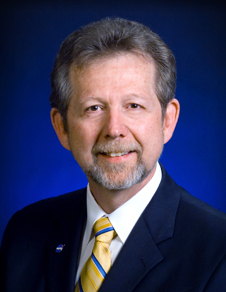Goddard Space Flight Center, Greenbelt, Maryland 20771
ENGINEERING COLLOQUIUM
Monday, May 10, 2010 / 3:30 PM, Building 3 Auditorium

James L. Green
"Balloons in the American Civil War"
ABSTRACT -- The first comprehensive use of airpower for military purposes occurred in the American Civil War. Both Union and Confederate forces used balloons with the primary intent on gathering intelligence of troop movements. However, the Union Army, with the Balloon Corp under the control of the colorful and flamboyant Thaddeus Lowe, took military ballooning to new heights. Lowe was a superb engineer designing, building, and operating dozens of new inventions--not the least of which were the first hydrogen field generators used to fill his balloons and the first aircraft (balloon) carrier. He and his aeronaut corps perfected artillery spotting, telegraph transmissions from balloons, and night reconnaissance using Calcium lamps.They created the first "Carrier Task Force" when his balloon, launched from the flat-topped carrier, was used together with Union gunboats to bombard Fort Powhatten on the James River in late July 1862. But this fabulous beginning of airpower was constantly hampered by the military it was trying to serve because Lowe and the aeronauts were civilian contractors rather than in the military or civil servants. Want to know how the story ends?
SPEAKER -- Jim Green received his PhD in Space Physics from the University of Iowa in 1979 and began working in the Magnetospheric Physics Branch at Marshall Space Flight Center (MSFC) in 1980. At MSFC, Jim developed and managed the Space Physics Analysis Network, which provided scientists all over the world with rapid access to data, other scientists, and specific NASA computer and information resources. In addition, Jim was a safety diver in the Neutral Buoyancy tank making over 150 dives until he left MSFC in 1985 and came to Goddard. From 1985 to 1992 he headed the National Space Science Data Center. In 1992 he became the Chief of the Space Science Data Operations Office until 2005 when he became the Chief of the Science Proposal Support Office. While at GSFC, Jim was also a Co-Investigator and the Deputy Project Scientist on the IMAGE mission. He has written over 100 scientific articles in refereed journals involving various aspects of the Earth's and Jupiter's magnetospheres and over 50 technical articles on various aspects of data systems and networks. In August 2006, Jim became the Director of the Planetary Science Division at NASA Headquarters.
Colloquium Committee Sponsor: Jeff Greenwell
Engineering Colloquium home page: https://ecolloq.gsfc.nasa.gov